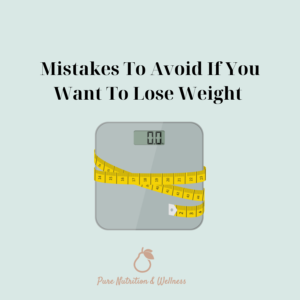
If weight loss is a target you’ve been striving to achieve, but haven’t found success yet, here’s a list of mistakes you could be making and what to do instead.
WEIGHT LOSS MISTAKE #1: EATING TOO FEW CALORIES
You have probably heard that to lose weight, you have to burn more calories than you consume. So it’s easy to make the leap in logic that drastically reducing calories should be a surefire way to lose weight. Except it’s not, at least not for long-term fat loss. That strategy backfires for a few reasons.
Super low calorie diets are too restrictive, unmaintainable, and likely to trigger binging on high calorie foods when you become hungry and willpower fails. When that happens, it’s not a sign of weakness but rather a signal that your brain is at work to prevent starvation. So while a super low calorie diet might produce weight loss if you can stick to it long enough, it’s probably muscle loss rather than fat loss, and any fat lost will soon return when you inevitably drop the restrictive diet.
Second, eating too few calories causes your metabolism to slow down significantly in an effort to prevent starvation. Thanks again to your smart brain with years of evolutionary coding for surviving famine. So while you think drastically decreasing calories is helpful for weight loss, it’s actually causing you to burn fewer calories and over time, that’s going to catch up to you. Slower metabolism + binge eating triggered by restriction = weight gain, not long-term weight loss.
WHAT TO DO INSTEAD
Set a slight calorie deficit for yourself and eat within that deficit. That could mean you track your food so that you know how many calories you’re eating or it could be simpler, like removing that extra cookie you eat every day at lunch or simply choosing smaller portions for meals or skipping seconds.
WEIGHT LOSS MISTAKE #2: RESTRICTING CERTAIN FOODS AND/OR FOOD GROUPS
We’ve all been there. . . wanting to lose weight so we cut out all the fun foods. . . ice cream, cookies, chips. Sometimes we even cut out all carbs and every thing that makes life worth living (just kidding) in the hope that we can lose weight. The problem with this strategy is that it relies on willpower and in the case of extreme diets like cutting out all carbs, we end up missing important nutrients. We can only restrict our favorite foods for so long before we experience cravings so strong we have to give in. And we don’t just give in, restriction is often followed by an all out binge on said forbidden food. Enter the binge-restrict cycle where we do “good” and avoid certain foods for a while, then we give in and binge, then we feel guilty and swear off that food again. The cycle goes on and on and you don’t get any real traction on your weight loss goal. When you fall in the binge-restrict cycle, if you see any weight loss at all, it’s typically yo-yoing, from weight loss to gaining it back plus some, and so on.
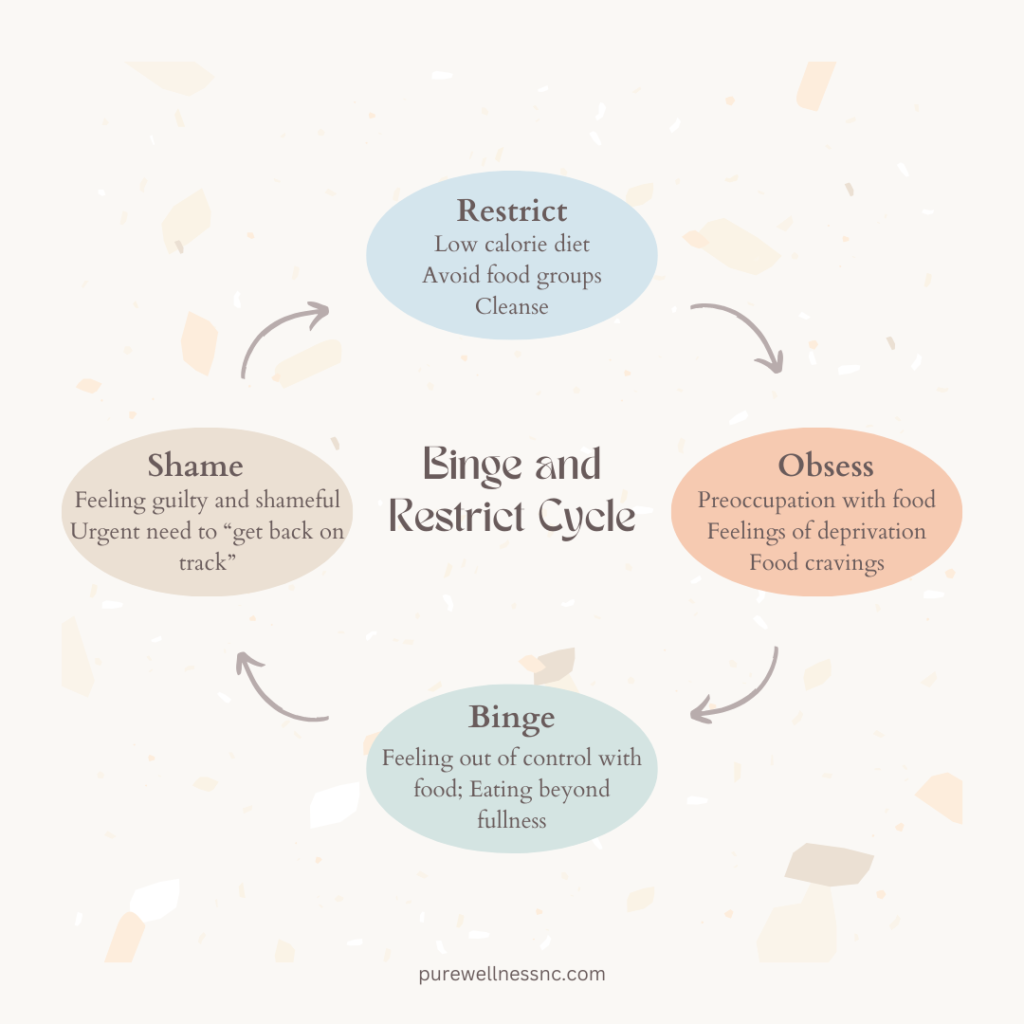
WHAT TO DO INSTEAD
Give yourself permission to enjoy all foods in moderation. Instead of swearing off chocolate cake forever, decide how much chocolate cake is reasonable for you. Maybe that means that if you’re at a birthday party, you give yourself permission to enjoy one portion of cake. Maybe chocolate cake makes your world go round and you decide that it’s ok to eat a small piece every night. One piece won’t sabotage your goals but binging on chocolate cake because you feel deprived leads to yo-yo dieting and weight gain.
WEIGHT LOSS MISTAKE #3: NOT EATING ENOUGH PROTEIN
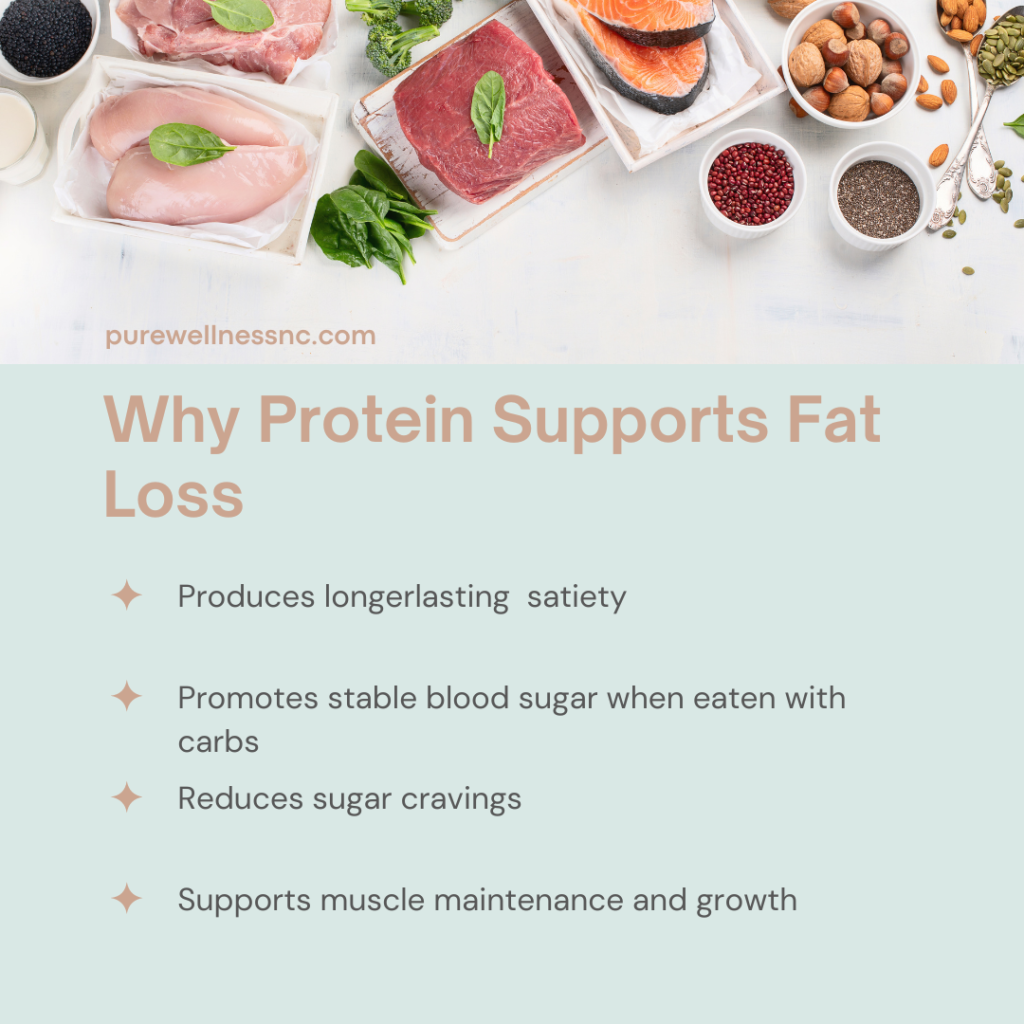
It’s not that protein is more important than other nutrients. It’s just that protein is one nutrient that we are likely to eat just enough to prevent deficiency, but not enough to support weight loss. There are a few reasons why protein is so important during for weight loss.
Protein takes longer to digest in our stomachs, so it produces lasting satiety. Carbs, especially refined carbs, are digested quickly and you end up hungry soon after eating a low protein, high carbohydrate meal. Add additional protein to your meal, and you will find that you are satiated much longer. This longer lasting satiation helps you limit snacking and take in fewer overall calories.
Because protein is slower to digest, it reduces blood sugar spikes when eaten with carbs. I recommend eating protein and fiber-rich foods before starch food for more stable blood sugars.
Protein also helps to reduce or eliminate sugar cravings, likely because of it’s ability to stabilize blood sugar.
Protein supports muscle maintenance and/or growth which is essential for keeping your metabolism high and for keeping your bones strong and body healthy. As we age, we lose muscle mass and since protein is the main building block of our muscles, taking in optimal amounts of protein along with weight lifting helps us preserve our lean muscle mass. If you’re in a cut, meaning you are reducing calories to try to lose weight, if you’re not eating enough protein, your body will break down muscle to get the nitrogen and amino acids (subunits of proteins) that it needs.
The minimum amount of protein to prevent deficiency is about .8g of protein per kilogram of body weight. Most people benefit from more than that, and you should work with a dietitian or health care provider to determine the optimal protein range for you. Check out this article to learn how to calculate how much protein you need for weight loss, or to schedule a free consultation with Pure Nutrition and Wellness, click here.
WHAT TO DO INSTEAD
Slowly increase your protein intake. Begin by increasing by 10 to 15 grams per day either by adding more high protein foods, or increasing your portion of lean protein that you already eat.
Check out this post for tips on increasing the amount of protein you eat each day.
WEIGHT LOSS MISTAKE #4: NOT EATING ENOUGH FIBER
Fiber is equally as important as protein, and in the Standard American Diet fiber is woefully lacking. Current dietary recommendations suggest women eat at least 25 grams of fiber per day and men eat at least 38 grams per day. Yet in our world of processed foods, many don’t come close to that mark.
Fiber promotes weight loss for a few reasons. Like protein, fiber takes longer to digest so you feel fuller longer and experience fewer cravings. Fiber also helps to minimize blood sugar spikes.
Fiber feeds gut microbes and encourages a healthy gut microbiome. A healthy microbial population is good for your overall health and also plays a role in weight loss because the types of gut microbes inhabiting your digestive tract impact how your body stores and releases calories, and also impacts fat storage. Research has shown differences in the gut microbes in people who are obese compared to those with a slimmer build.
Gut microbes also impact the brain through the gut-brain axis and directly influence appetite. The link between gut microbes and obesity is still being studied, but if you’re interested in learning more, check out this article from the World Journal of Gastroenterology.
Aside from increasing satiation and encouraging a healthy gut microbe population, increasing fiber means eating more whole foods like fruits and vegetables, and that ultimately encourages more balanced, healthy eating. When you fill up on nutritious foods, you’ll naturally have less appetite for highly processed foods that are linked to weight gain.
WHAT TO DO INSTEAD
Increase your fiber intake by eating more fresh fruits, vegetables, whole grains, and legumes. Begin slowly, adding on too much fiber all at once will leave you feeling bloated and uncomfortable, and as you increase your fiber intake, be sure to increase the amount of water you are drinking along with it.
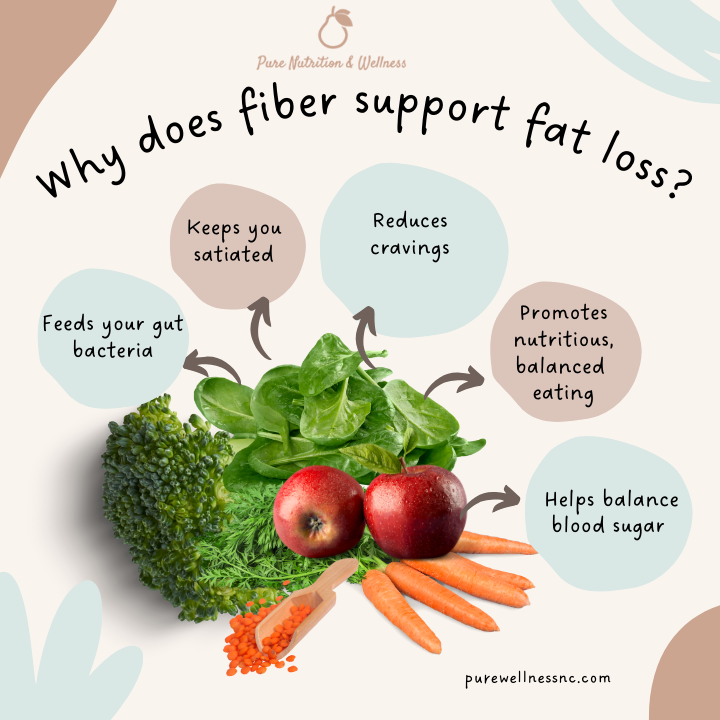
WEIGHT LOSS MISTAKE #5: SKIPPING MEALS
A common belief I see among my clients is that skipping a meal, often breakfast, is a great way to decrease overall calories for the day. But what actually happens when we skip breakfast is that we set ourselves up for sugar cravings and binges later in the day. When we go too long without eating, our ravenous state triggers a biological drive to eat that once initiated, results in overeating and consuming calories in excess.
Skipping meals also triggers a decrease in metabolism. Our body registers the lack of food, and in an effort to conserve energy and calories, slows metabolism.
WHAT TO DO INSTEAD
Focus on fueling your body with 3 well-balanced nourishing meals. Listen to your hunger cues and add snacks in between meals if needed to avoid reaching a ravenous state. Learn more about tuning into hunger and satiety cues here.
WEIGHT LOSS MISTAKE #6: CONTINUING TO LET EMOTIONAL EATING RUN YOUR SHOW
Emotional eating means consuming food, often high calorie comfort food, in response to an emotion rather than physical hunger. Some emotional eating is normal, and if it doesn’t happen often, it’s unlikely to impact your weight loss efforts. However, if it’s your only coping strategy, emotional eating becomes a surefire way to sabotage your weight loss efforts because it can lead to consuming a large amount of calories in excess of daily caloric needs.
WHAT TO DO INSTEAD
Identify Your Cues
Practice the skill of identifying your cues. Pay attention to the triggers that prompt your emotional eating habits so that you can bring awareness into situations that trigger you. Awareness is an essential step to reshaping any behavior.
Pause, Label and Ask
Practice the skill of pausing before you eat to label the emotion you are feeling and to ask yourself what you are hoping the food will do for you. When you bring awareness into the why behind your eating behavior, that gives you power to make an informed decision about what you really want. You get to decide to proceed with emotional eating or not. It’s 100% ok if eating is how you choose to take care of your emotional needs, but more often than not, emotional eating happens so quickly and leaves us feeling regretful. It’s almost as if it happens to us. . . like we don’t have a choice. We have a quick thought that leads to an emotion and boom. . . we’re downing the chips, wine or ice cream. That’s why practicing a pause before you eat can be so impactful to curbing emotional eating.
Choose and Move
Once you create the pause, you get to decide if emotional eating is the way you want to meet your need. Like I said before, it’s ok if that’s what you choose to do, and you need to be prepared to own the consequences of your choice. Consequences could range from feeling better to feeling bloated or uncomfortable or going over your calorie goals. Either way, you need to choose what you want to do and then move on- either eat the thing or follow through with another option that will work to soothe your emotion. Your emotions are a communication tool telling you what your body needs, and you deserve to have your emotional needs met. But eating is only one of a limitless number of ways you can soothe. Consider trying other options to see what works for you.
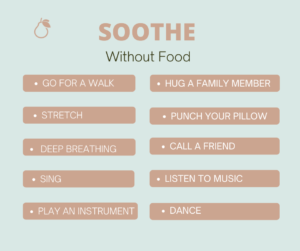
Emotional eating is a complex behavior and if you want to learn more about how to end the emotional eating cycle, check out my self-paced emotional eating course or book an inquiry call to learn more about how you can get one-on-one support.
WEIGHT LOSS MISTAKE #7: HAVING UNREALISTIC EXPECTATIONS
It’s not uncommon to expect weight loss to happen quickly. We live in a world of instant gratification and our social media feeds are filled with posts about people who have dropped weight quickly. While it’s 100% possible to lose weight quickly, that doesn’t mean that it’s healthy or the best way to lose weight. The truth is, making small sustainable changes that result in slow weight loss is ideal over drastic weight loss because quick weight loss is often unsustainable.
When weight loss doesn’t happen as quickly as we expect, we get frustrated and jump to the next diet or weight loss strategy, or we just adopt the belief that weight loss is impossible for us and we give up. The irony in that is that giving up is the only sure way to guarantee that you won’t reach your weight loss goals.
WHAT TO DO INSTEAD
First, evaluate your habits and the changes you are making to lose weight. Are you consistent with those habits? If you are not being consistent, then factor that into the expectations you have about your weight loss and begin to focus more on consistency with your healthy habits than on the weight itself.
Second, consider how you are evaluating weight loss. Are you looking only at the number on the scale? Or are you including other quantitative and qualitative measurements like your waist circumference, how your clothes fit, progress pictures, or how you look in the mirror. If you are only basing your progress on the scale, you are using incomplete and inaccurate data, so instead use the scale (if you want to, but definitely not if you have a poor relationship with the scale) along with other measurements. It’s ok to not use the scale at all!
Third, sustainable weight loss takes time and is NOT linear. Adjust your expectations to match that fact. It’s not realistic to expect to lose two pounds or more a week until you reach your goal. In reality, sustainable weight loss often looks more like ¼ of a pound or half a pound some weeks, while other weeks, you might maintain or even go up a bit in weight. Because your weight is impacted by more than just fat loss or gain (hormones, muscle mass, inflammation, hydration fluctuations, etc.), you should expect these fluctuations and look for an overall downward trend if you’ve been consistent for a few weeks or more.
WEIGHT LOSS MISTAKE #8: NOT MEAL PLANNING AND PREPPING
It’s so cliche, but this one makes me think back to 7th grade pre-algebra when my teacher would repeatedly remind us that “failing to prepare is preparing to fail.” There’s so much truth to this, especially with meal planning and prepping. Healthy eating doesn’t just happen by chance, and often healthy foods aren’t found in a quick stop at the drive through or in a package that you can open and eat at the last minute. More often, healthy balanced eating requires at least a minimal amount of planning and preparation ahead of time.
When you don’t have healthy food ready to go, you are exceedingly less likely to follow through with healthy eating goals. Without any time spent planning and prepping for success, most people opt for easy options that are higher in calories and less nutrient dense, like pre-packaged convenience foods, fast foods, or take out.
WHAT TO DO INSTEAD
Examine what prevents you from investing time in meal planning and prepping. Do you hold a belief that meal planning and prepping is too boring, or that it has to occupy your entire weekend? Because if you think it means you have to give up your whole weekend for the sake of cooking, unless you really love to cook, of course you’re not going to be highly motivated to meal prep.
Instead, start small with a simple meal plan. This could look like planning your dinner for three days this week. Then follow through with minimal meal prep- it could be as simple as grocery shopping on the weekend to make sure you have all the foods you need to cook in the evening. Or you might want to spend a little more time prepping on the weekend, especially if you have a busy week ahead, so it might look like washing all your produce and maybe even chopping and dicing fruit and vegetables so they are ready to use.
There’s no right or wrong way to meal plan or prep. You can plan breakfast, lunch, dinner and snacks for a full week, or you can plan just one meal. The key is to just get started. If you want to learn more about meal planning and prepping strategies that work, check out this article about meal planning and this article about meal prepping.
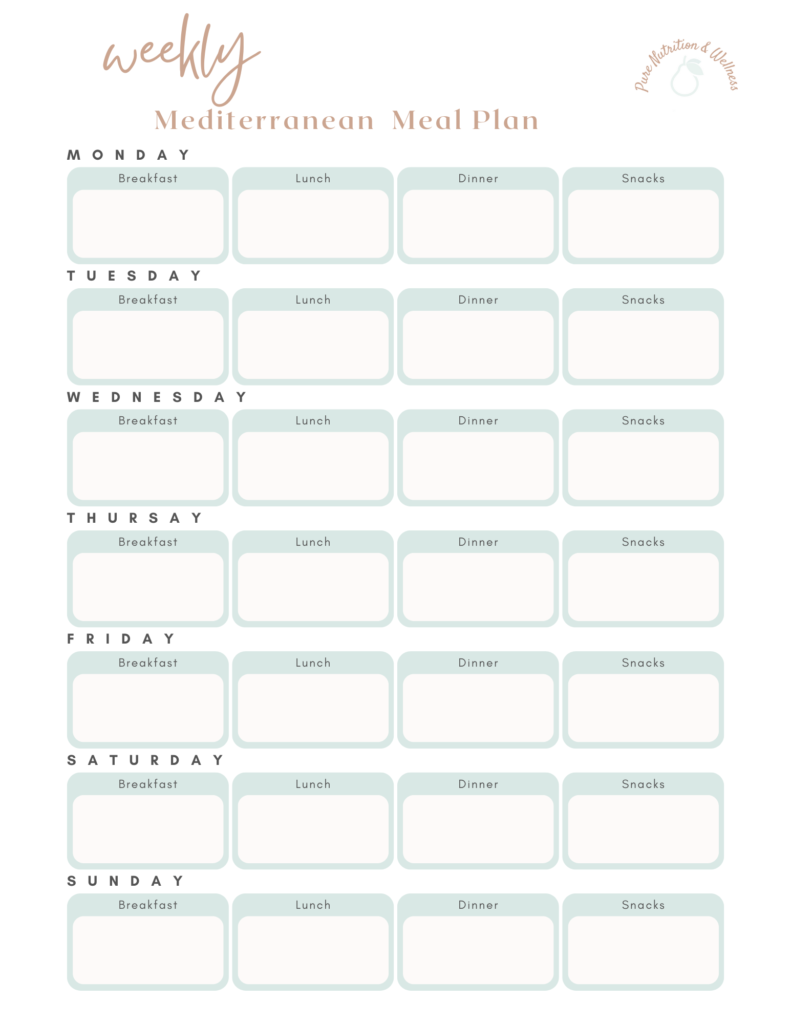
WEIGHT LOSS MISTAKE # 9: NOT PRIORITIZING SLEEP
Consistently lacking sufficient sleep quality and/or quantity has proven to be a barrier for fat loss. Sleep regulates hunger and satiety hormones, and a lack of sleep increases appetite and cravings for sugary, high calorie foods. Poor sleep also slows down metabolism. While good sleep alone isn’t enough to produce weight loss (you still need other healthy habits and a calorie deficit), poor sleep will certainly hinder weight loss efforts.
WHAT TO DO INSTEAD
Prioritize sleep. Make sure that you are allowing for at least 8 hours of sleep opportunity. Create a relaxing bedroom environment that is both cool and dark, and establish a bedtime routine that helps you unwind and release stressors from the day. Check out this post for more information about how to achieve restorative sleep that supports weight loss.
WEIGHT LOSS MISTAKE #10: LETTING YOURSELF OFF THE HOOK
Does this sound familiar? You planned to get in a 30 minute workout after work but you feel tired when you get home, so you sit down on the couch and use that 30 minutes to unwind while you scroll on your phone. You tell yourself “It’s been a hard day, so I’m going to give myself grace and just relax.”
“Give myself grace” is a phrase that I’ve been hearing increasingly often as a reason people are not staying in integrity with the goals they set for themselves. While I’m all for giving yourself grace when you need it, I’m also for holding yourself accountable to do what you say you’ll do. So check in with yourself. Are you using that excuse often? Maybe ‘excuse’ sounds like a harsh word here, but I want to call it what it is. Sometimes what we really need is a swift kick in the butt, not ‘grace’ to let ourselves off the hook. If you’re reading this and you’re feeling resistance, then that’s a sign that you might be letting yourself off the hook too often.
WHAT TO DO INSTEAD
Begin by recognizing your patterns. If you find that you don’t follow through with your intended healthy habits, get curious about your internal dialogue around those habits. What excuses are you creating for yourself? When you get take out instead of cooking the healthy dinner you planned, are you telling yourself “just this one time won’t hurt” or “I’m tired, I need a break”? Notice what those excuses are and begin to question them. While you might be right, just one time won’t hurt, man, that’s a slippery slope. If you are letting yourself off the hook more often than not, instead choose to hold yourself accountable by following through with some version of your goal. For example, if you planned a 30 minute workout, but that feels like too much, shrink it down to a quick 15 minute walk around your neighborhood. Make it feel really easy while you shift out of the habit of making excuses and into the habit of following through with the goals you set.
Sometimes you really do need to give yourself grace. I can’t tell you when you need to back off and rest and when you need to hold yourself accountable, suck it up and do the thing you might not feel like doing, but you’ll probably intuitively know if you start paying attention to your habits. If you find you don’t have the results you want, remember, your results are a lagging indicator of your habits. Look at your results for clues about what you really need to achieve your goals because often, it’s not more grace to let yourself off the hook.
*Disclaimer: I’m not suggesting that if you have the flu or an injury or something like that, that you should suck it up. . . please use common sense. 💕
OVERWHELMED? LAYER YOUR HABITS
These are the top 10 mistakes I see clients making in my practice, and if you feel like you’re making the same mistakes, you’re not alone. If this all feels overwhelming, remember, Rome wasn’t built in a day. You don’t have to make any drastic changes and you don’t have to work on improving all 10 mistakes today. Practice layering habits over time. I recommend starting with the low hanging fruit. Pick one thing that is relatively easy for you to implement and get started with just that one thing. Forget about the rest for now. As the saying goes, chase two birds, catch none. Once you are comfortable with one new habit, then layer on another.
The layering process could look like this. . .
You have a habit of skipping breakfast and grabbing a pastry for a midmorning snack, and the habit you want to establish is to eat a balanced breakfast so you don’t need a sugary morning snack. Start by picking an easily prepared breakfast that you can eat in a short amount of time – maybe a hard boiled egg and a banana. Believe it or not that’s a fairly balanced breakfast. The egg provides both protein and fat and the banana provides starch and fiber. You can eat this breakfast relatively quickly and if you buy eggs already hard boiled, this becomes a grab-and-go breakfast with no prep time required. Do this for a few weeks (I know, you might become bored and want to switch up your options) until it feels like it’s beginning to become automatic. Then you layer in another habit, maybe it’s drinking a glass of water before your morning coffee or getting up 10 minutes earlier than normal to do a quick weight lifting session before getting ready for work. Once that becomes your normal, you layer in something else, like upping your morning workout routine so that you are getting up 20 or 30 minutes earlier than your baseline to get a more thorough workout in.
This all takes time- the layering in of habits does not happen overnight, so the mindset shift from “I have to do this all now” to “this is a slow process and it’s going to take the time it takes” makes a huge difference. Successful layering of habits requires time, and that means weight loss or the results you’re looking for becomes a slow process also. But, wouldn’t you rather lose weight slowly, but have established routines and habits that allow you to easily keep it off, then to lose weight quickly only to gain it back and continue the weight loss roller coaster?
If you’ve read this and feel discouraged that you’ve been making some of these common mistakes, remember, mistakes are the best way to learn, so you don’t have to feel bad. The more mistakes you make, the closer you come to success as long as you learn from your mistakes and never give up. As Og Mandino said when asked what the secret of success is, “You should triple your rate of failure.” So there’s no reason to be ashamed or even discouraged by failure. . . it only indicates that you’re on the right track and you are one step closer to success.

If you think you would benefit from one-on-one nutrition counseling and coaching, fill out an inquiry form to schedule a free consultation.
